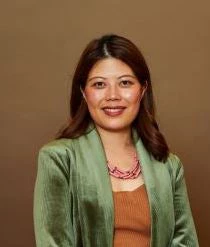Available in: Français, ภาษาไทย

However, those symbols faded in my mind after I visited an old, impoverished part of Bangkok and met the people who currently are the most vulnerable to HIV/AIDS- the injection drug users.
HIV/AIDS and other blood-borne diseases are transmitted when needles are shared. Under influence, many users are also likely to have unprotected sex. There are programs called ‘harm reduction’ where drug users are provided with clean needles, syringes, and condoms to avoid transmission. Condom distribution is easy but needles are another issue.
It’s not uncommon here to hear stories of community workers delivering clean needles harassed by the police. Possession of needles and syringes, in fact, isn’t illegal in Thailand. Harm reduction programs aren’t also widely accepted because of the way society sees drug users. Tragically, this pushes drug users further underground and further away from the help they need.
When we speak about HIV/AIDS we also have to listen to the voices of the most vulnerable. I spoke to three people who are very familiar with harm reduction, drug use, and the epidemic.
Karyn Kaplan
Karyn is the co-founder of a community center in Thailand which specializes in harm reduction programs.
“Drug users themselves choose to be healthy when given the support. People ask: ‘Isn’t giving needles the same as promoting drug use?’ Is giving out condoms promoting sex? No. It’s recognizing it as a fact of life and using the best approach to stopping disease transmission. It’s about opening up a space for someone to say, “Great, can I have a needle please. Can I also have an HIV test?” .The harm reduction credo is meeting people where they’re at. If they want a needle, we give them a needle. If they want drug treatment, then we’ll support them. We want them to feel that this is a safe place for them to ask for a needle and for assistance in receiving antiretroviral treatment. That is what we believe will lead to a healthier society. A lot of people come to our community center as participants and then become staff. We’ve had many instances where an HIV positive person comes to the center for services but who later on wants to go through training and become a peer educator for his/her communitY.”
Aek (*not his real name)
Aek, 46, is a former injection drug user who lives in Bangkok.
“Participating in harm reduction made a big impact in my life. It truly reduced my risk of getting sick and dying from disease. I have better and more access to services. These harm reduction programs also helped me see my value as a person.”
Zashnain Zainal
Zashnain has been working with injection drug users and other groups that are most at risk for HIV since 1996.
“Harm reduction is as much part of healthcare as any medicine. People are so used to thinking of drug users as the scourge of society when they should be seen as patients. In truth, no one likes being an addict. I’ve worked with many drug users before and they all want to be productive members of their communities. If you think addiction is an issue then shouldn’t you give people the tools to move away from that addiction and also stay safe (from blood-borne diseases like HIV and Hepatitis)?”
I’m interested in hearing your thoughts on harm reduction as a way of reducing HIV/AIDS from spreading. Will distributing clean needles and syringes ever be as easy as giving out condoms? Distributing condoms was taboo in Thailand just 20 years ago. What can we do to encourage society to be more open to harm reduction?
Read more about Harm Reduction in Thailand and check out a slideshow my colleagues and I put together after visiting a community center:



Join the Conversation